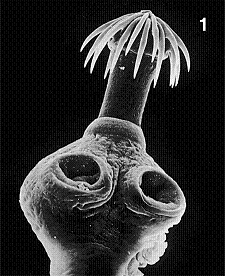A cDNA library
A) is generated by copying genomic DNA with the polymerase chain reaction and cloning the resulting complementary DNA (cDNA).
B) is generated by copying messenger RNA (mRNA) with the enzyme reverse transcriptase and cloning the resulting complementary DNA (cDNA).
C) corresponds to the protein complement of a cell.
D) doesn't contain introns.
E) doesn't contain introns because it is generated by copying messenger RNA (mRNA) with the enzyme reverse transcriptase and cloning the resulting complementary DNA (cDNA).
Answer: E
You might also like to view...
Which of the following statements is NOT true?
a. There is always a gradient of sucrose concentration from source to sink. b. Sucrose is generated at the source and converted or used at the sink. c. Companion cells help load the phloem sieve tubes. d. Sieve tubes are only passive conduits for translocation. e. The active transport of water into the sieve tubes produces the pressure for the translocation of organic compounds in the phloem.
The structure shown in Figure 31-3 is from an animal in phylum:

A. Cestoda.
B. Turbellaria.
C. Trematoda.
D. Monogenea.
E. Platyhelminthes
The production of (exotoxin/coagulase/hyaluronidase) enzyme breaks down connections between cells, allowing Streptococcus pyogenes to invade tissue and cause necrotizing fasciitis
What will be an ideal response?
In testing if promotions (binary) Pi have an effect on sales, Si with a null hypothesis that the average treatment effect is zero, the null hypothesis could be written as:
A. E [Si (Pi = 1) - Si (Pi = 0)] = 0 B. E [Pi - Si ] = 0 C. E [Si (Pi = 1) - Si (Pi = 0)] = ETT D. E [Pi - Si ] = 1